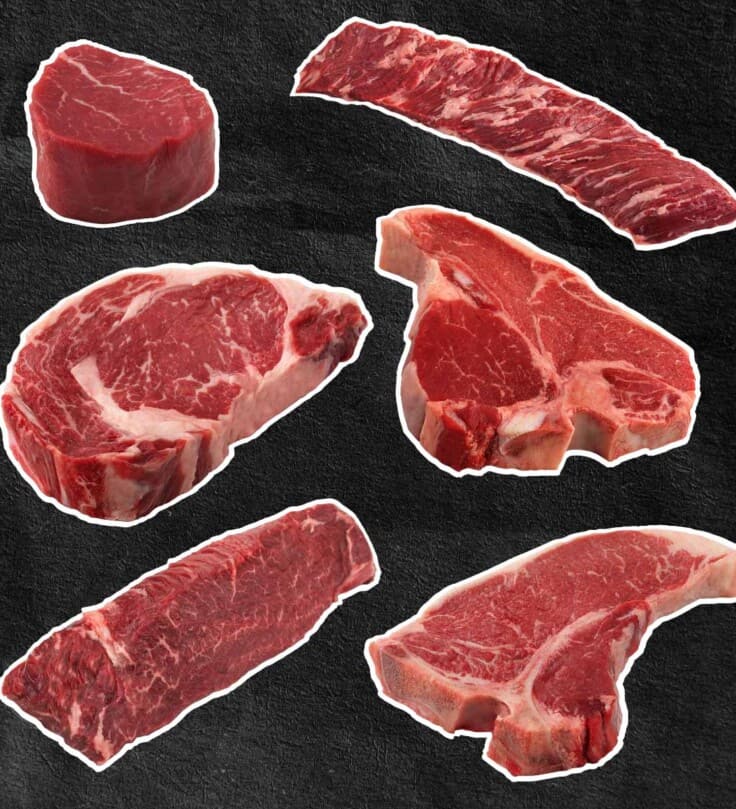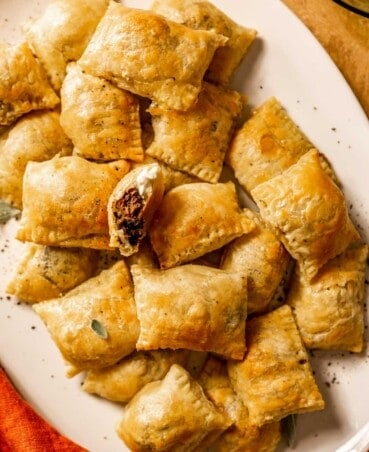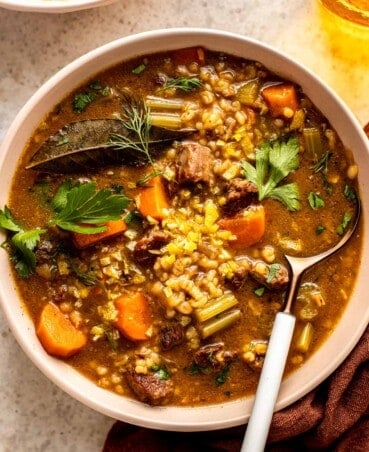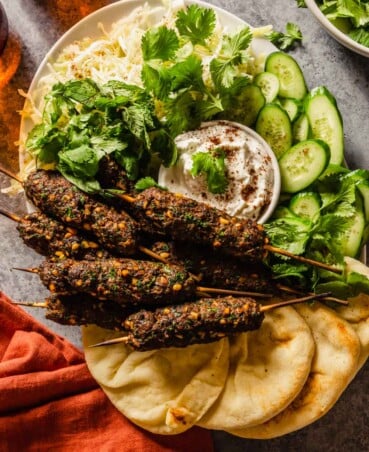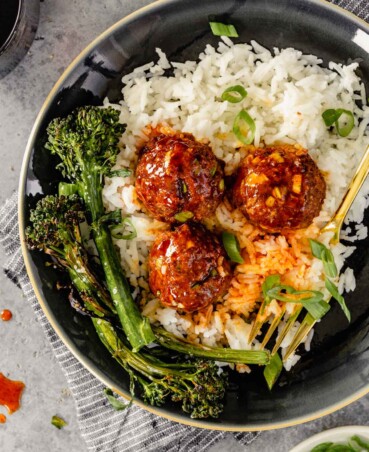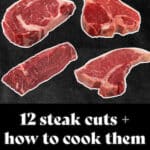If you’ve ever stood in the meat aisle or the butcher counter and felt lost looking at the different steak cuts, we’re here to help. The many different types of steak can leave anyone feeling confused about what to pick.
The cut of steak you’re looking for can vary based on the cooking occasion and recipe.We’ll cover everything you need to know about cuts of steak, how to choose between them, how to cook each steak and what to look for when buying.
Table of Contents
Steak Basics
There are 8 primal cuts for cattle butchering, which include chuck, rib, loin, round, brisket, short plate, flank, and shank.
The most popular, juicy, and tender cuts come from the loin or rib, but there are also many excellent options for your favorite recipes with steak in all of the primal cuts. We’ll touch on nearly all of them in this article.
Which cut to choose can depend on your preference and how you plan to prepare a steak. Here are a few universal tips for purchasing and cooking steak:
- Marbling = more juicy flavor. Look for pieces with consistent marbling to ensure delicious flavor in every bite.
- Always season with salt on both sides. Salting at least 1 hour before cooking helps tenderize the meat, enhance flavor, and lock in moisture.
- Always check the internal temperature to ensure correct doneness. We recommend using an instant-read thermometer (that’s our favorite). Not sure how to use one? We’ve got a guide on how to use a thermometer!
- After cooking, rest your steak for at least 5 minutes before serving to lock in juices and finish cooking up to temperature.
Top 12 Cuts of Steak
Below we dive into 12 different types of steak, or cuts of steak. You’ll learn more about where they come from on the animal, what they are known for (i.e. tenderness, juiciness, leanness) and how to cook them to highlight their best features.
Ribeye
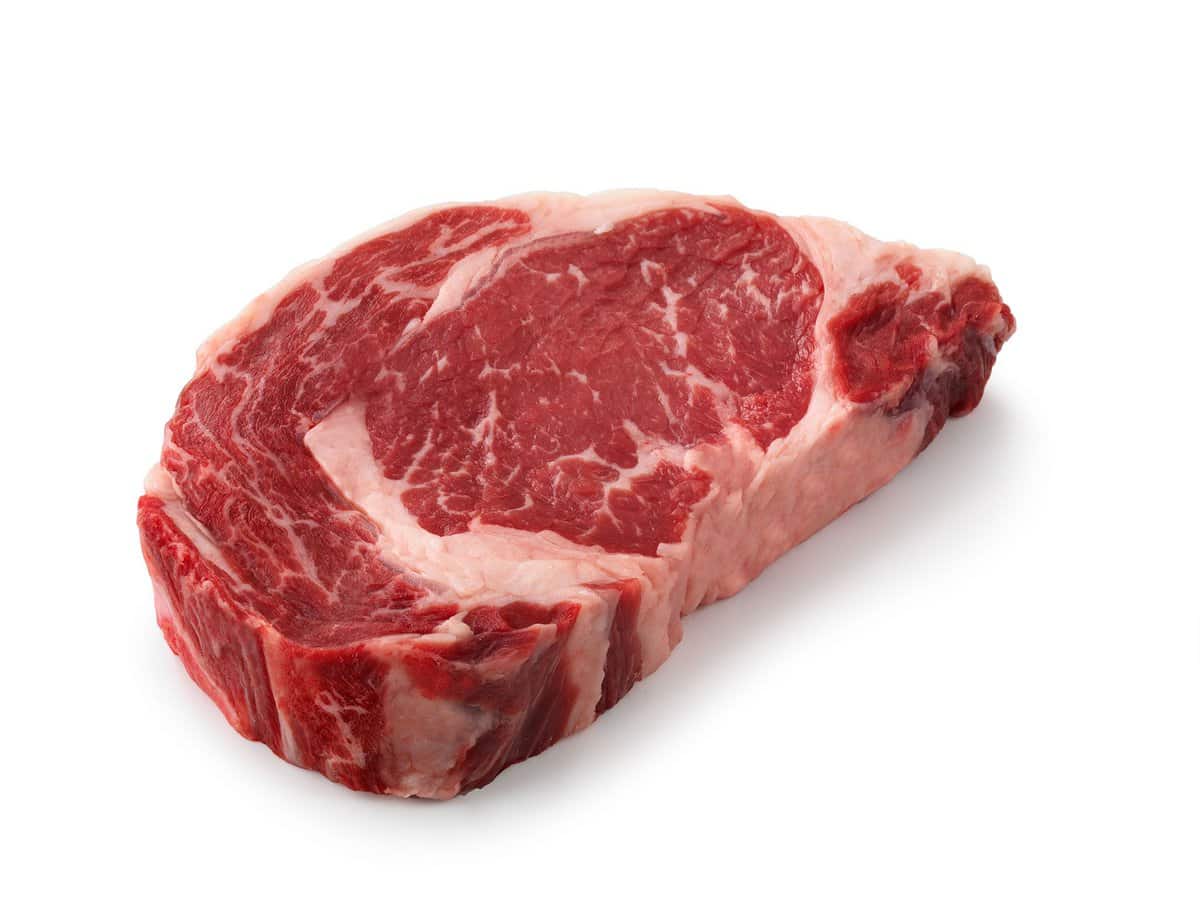
Ribeye is a very popular cut because it is just so juicy and tender. A ribeye is cut from the rib area, along the backbone’s front section.
Ribeye steaks are highly marbled, so you’ll see many white marbling lines and larger pockets of fat among the red meat on a ribeye. They tend to be thick cuts, ranging from 1–2 inches in thickness.
All that marbling melts into juicy flavor during cooking, earning the ribeye a reputation as one of the richest and most decadent cuts of steak. You can purchase ribeye either bone-in or boneless depending on your preference.
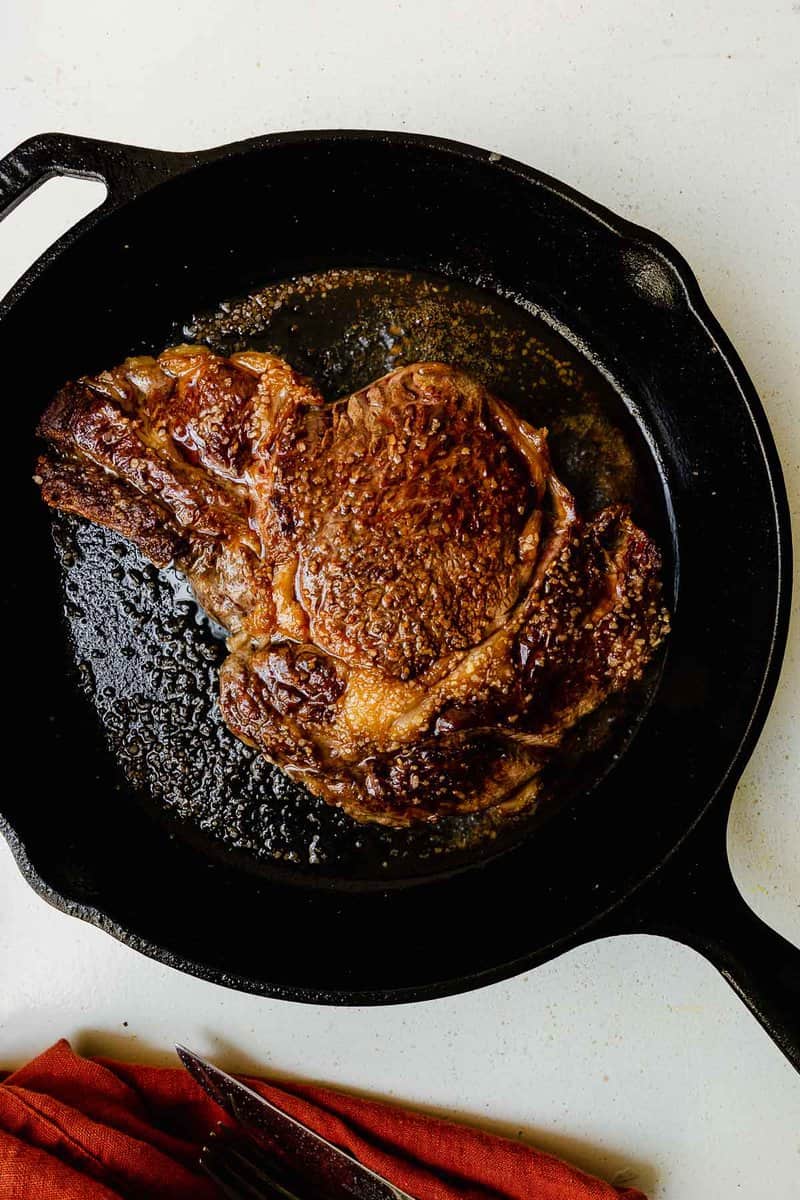
How to cook Ribeye Steak
Because of its marbling and naturally rich flavor, ribeyes need little seasoning–a sprinkle of salt on each side is all you need.
You can cook a ribeye in a variety of different ways—grilling, roasting, and even the air frying are all great methods.
Strip Steak
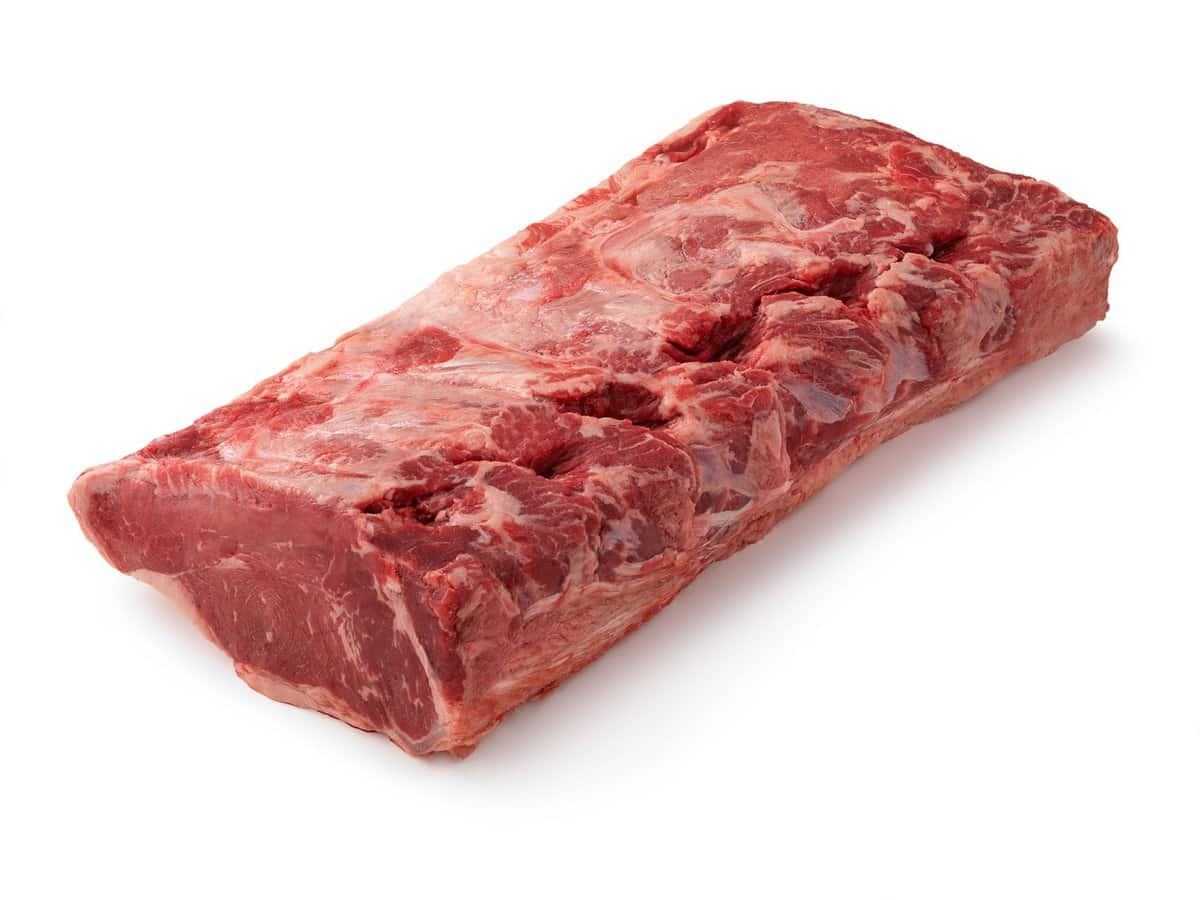
Strip steak is a popular and classic cut that is highly versatile. A strip steak comes from the top part of the loin primal area, just behind the ribs.
It’s a lean, yet juicy cut. You simply can’t go wrong with it! This cut is also called a New York strip, Kansas City strip, or top loin.
Strip steaks are lean, but have a nice sprinkling of marbling throughout without large pockets of fat.
How to Cook Strip Steak
The tender and juicy nature of strip steak means they are perfect for grilling. No marinating is needed.
Strip steak is also an excellent candidate for reverse searing, which involves roasting in the oven first and finishing with a quick sear in butter on the stovetop.
While strip steak has a hearty flavor to serve as the star of the meal, it is also an excellent cut for dishes such as steak frites. Or even sliced and piled on a blue cheese steak salad.
Tenderloin aka Filet Mignon
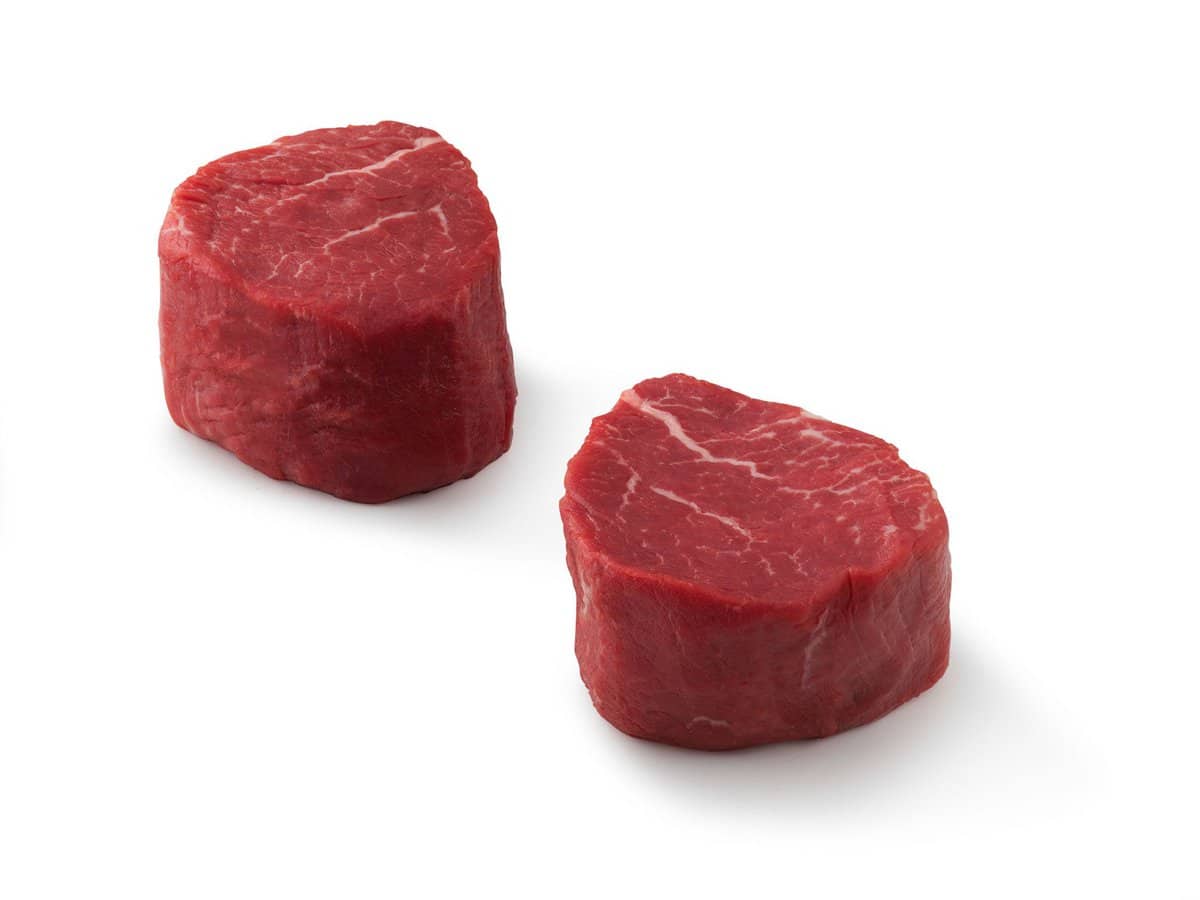
Filet Mignon, also called tenderloin steak, comes from the very tip of the tenderloin. It’s a very lean cut, but prized for its tenderness. It practically cuts like butter and has an exceptional flavor (along with a premium price tag).
You often find filet mignon as a petite cut, typically in a round-ish shape. There is little visible fat or marbling in filet mignon.
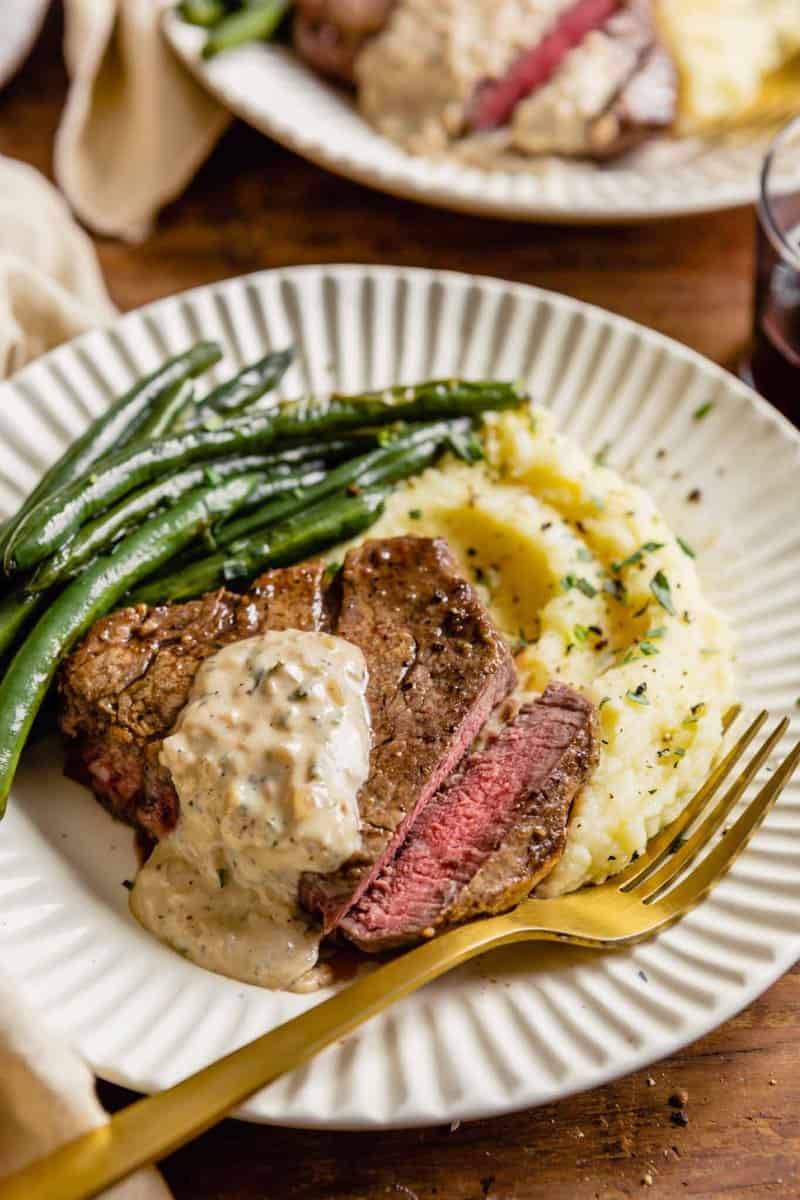
How to Cook Filet Mignon
Because there is little fat or marbling in filet mignon, it can easily dry out. The cooking method is very important to preserve a juicy AND tender filet.
We recommend pan searing a filet mignon or cooking it under the broiler. Though you can never go wrong with a sous vide filet mignon either!
Flank Steak
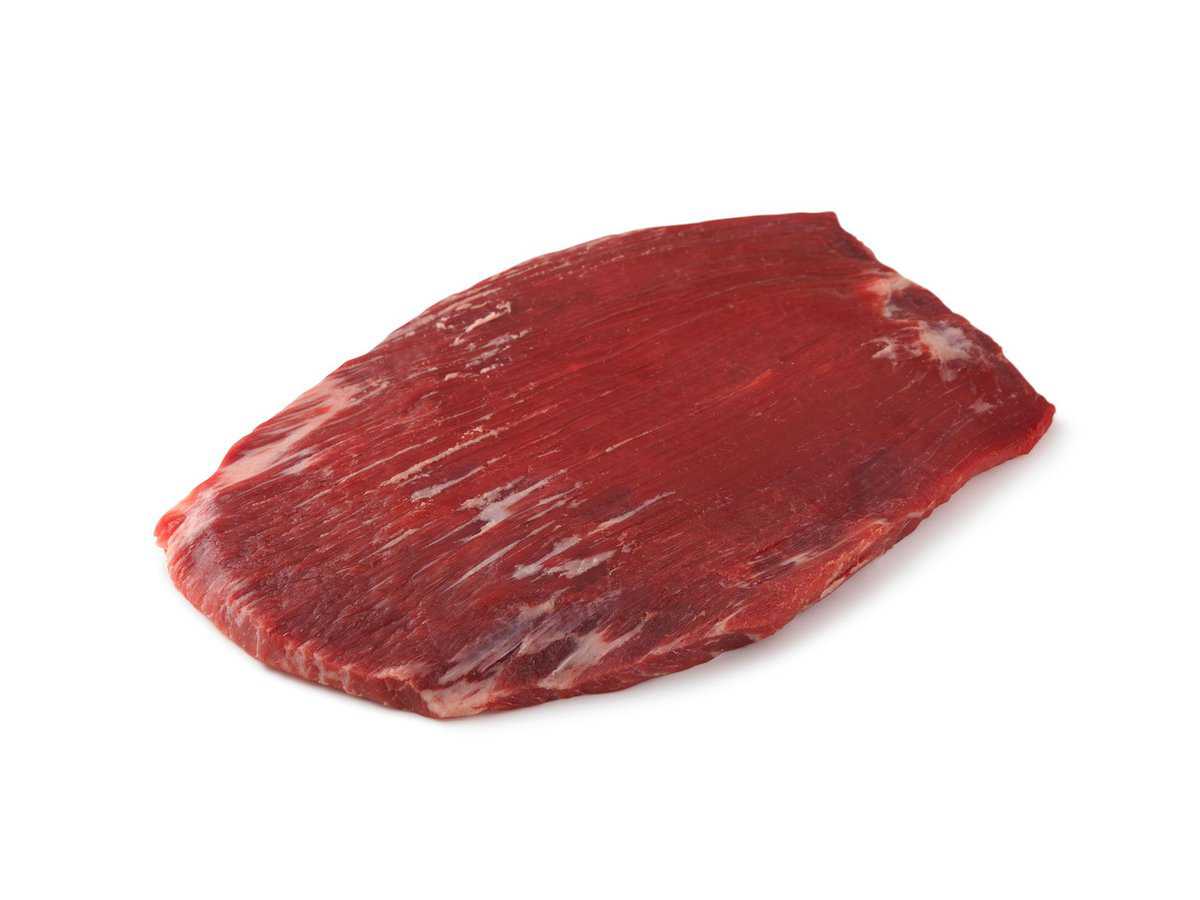
A flank steak is a large, flat, and relatively thin cut from the flank area–just below the loin and behind the abdominal muscles. Flank steaks are lean, with little marbling, and have a striated or streaked appearance.
A flank steak is great for serving a crowd and has a robust, beefy flavor. It’s often sliced against the grain into thin strips for optimal tenderness.
Use flank steak in dishes such as stir fries, tacos al carbon, or one of our favorites, beef negimaki.
How to Cook Flank Steak
We recommend marinating a flank steak to help tenderize the meat for at least 20 minutes. Grill or pan-sear on high heat to medium rare.
Because a flank steak is thin, it will cook quickly. Cut against the visible striations (the grain) to serve.
Flank steak pairs well with flavorful sauces such as chimichurri.
Top Sirloin
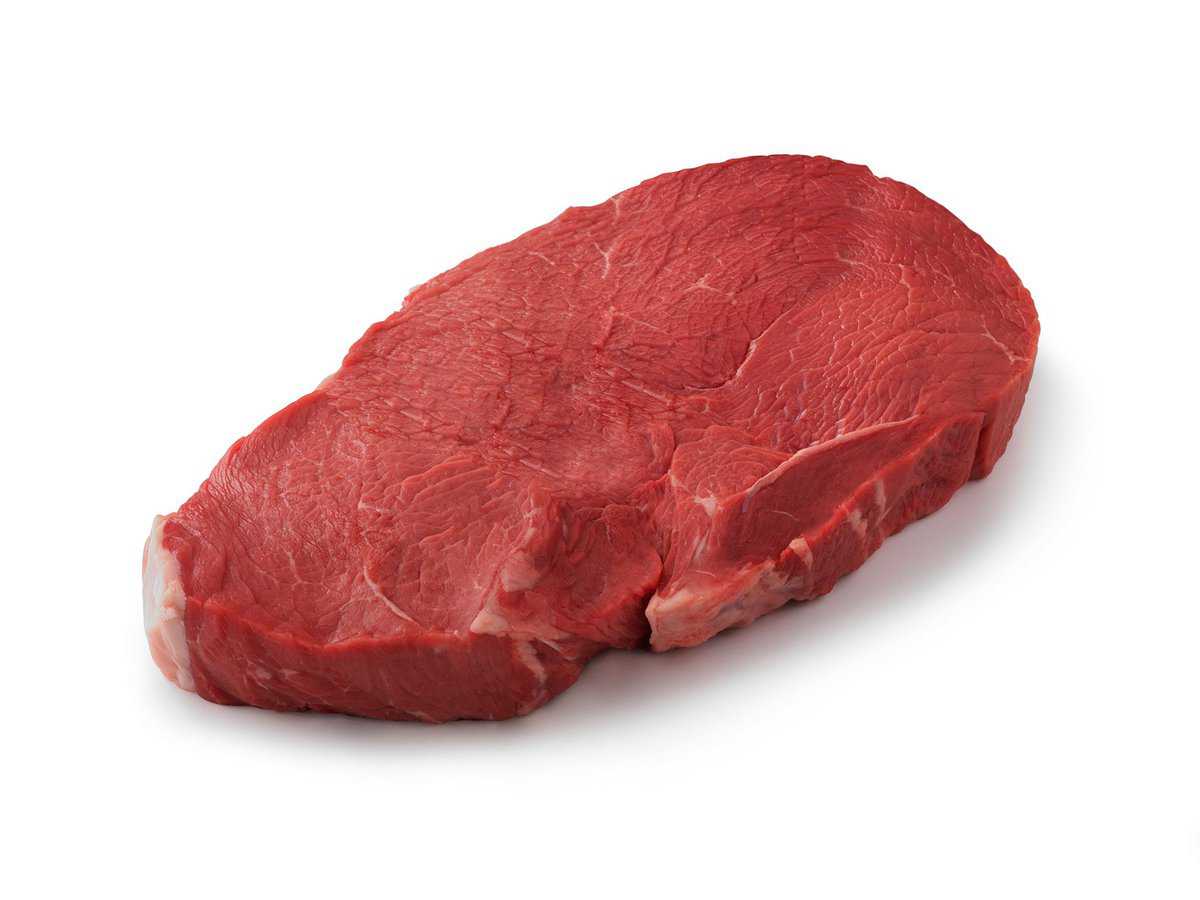
Top sirloins are lean and affordable cuts from the area along the backbone, towards the hip. You may see it called top sirloin, top sirloin center cut, boneless top sirloin butt steak, top sirloin cap off, or top sirloin filets.
The sirloin area is first cut into the top and bottom butt sirloin during butchering. As the name implies, these steaks come from the top butt section and are more tender than bottom butt sirloin (which is sometimes simply labeled sirloin).
Sirloins tend to be lean but still have rich flavor and beautiful marbling. A top sirloin steak works great for kabobs, sliced on top of a Thai Steak Salad, or served on its own with our Mushroom Sauce for Steak.
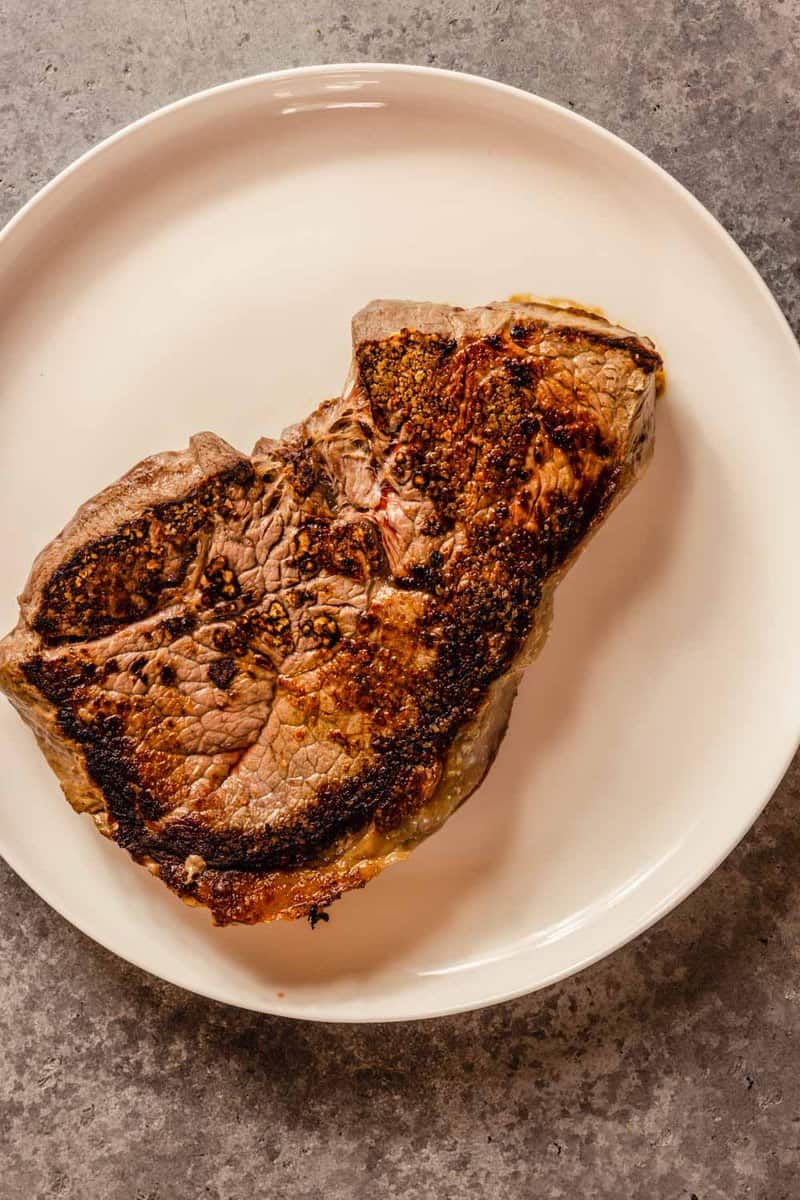
How to Cook Top Sirloin Steak
Sirloins are very versatile and hold up well to nearly any cooking method. A dry seasoning works great, and typically a marinade is not needed.
Love the sound of a top sirloin? Learn how to cook top sirloin 4 different ways!
Skirt Steak
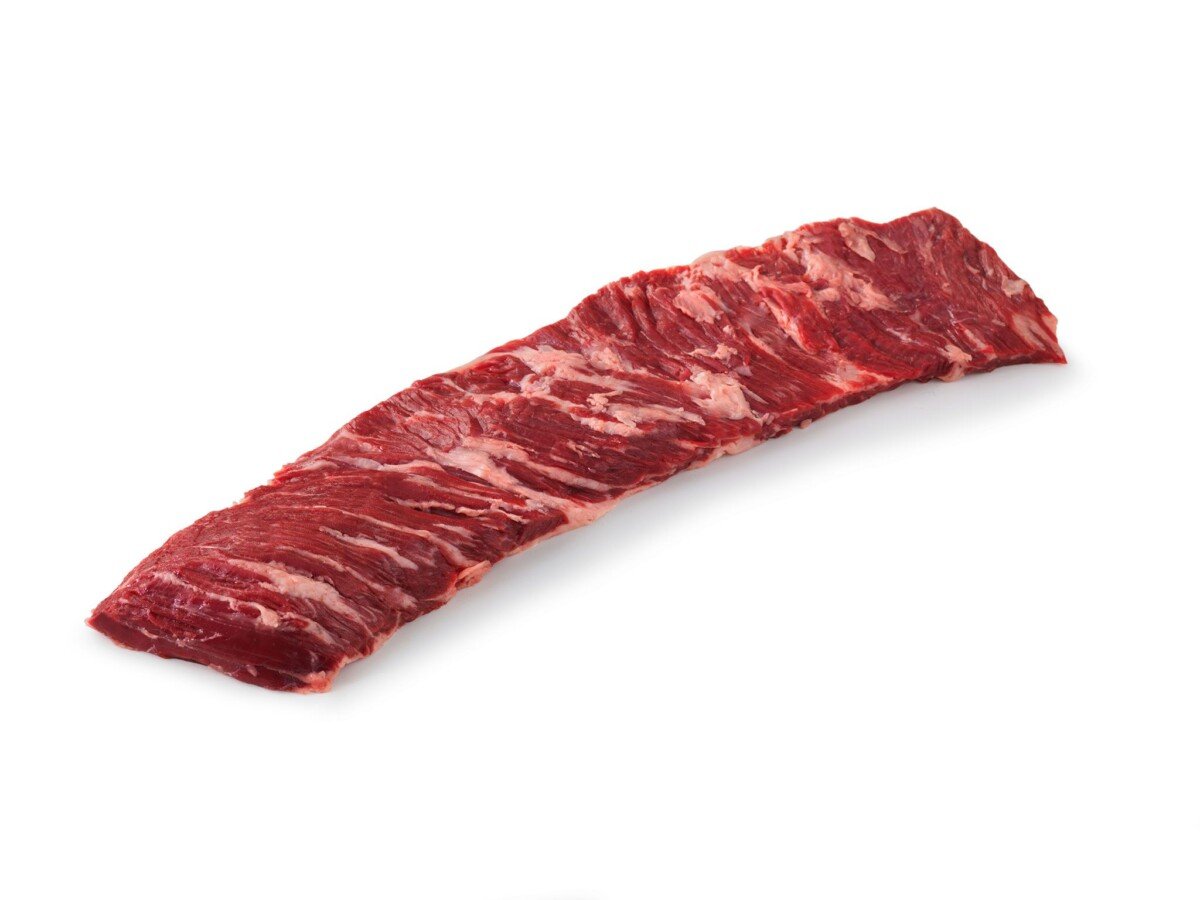
Skirt steak is a long, wide strip cut from the underside of the cow. You may find both inside skirt or outside skirt steak at the butcher and there is a difference! The outside skirt is our preferred cut that is more tender, while the inside skirt cut tends to be chewy.
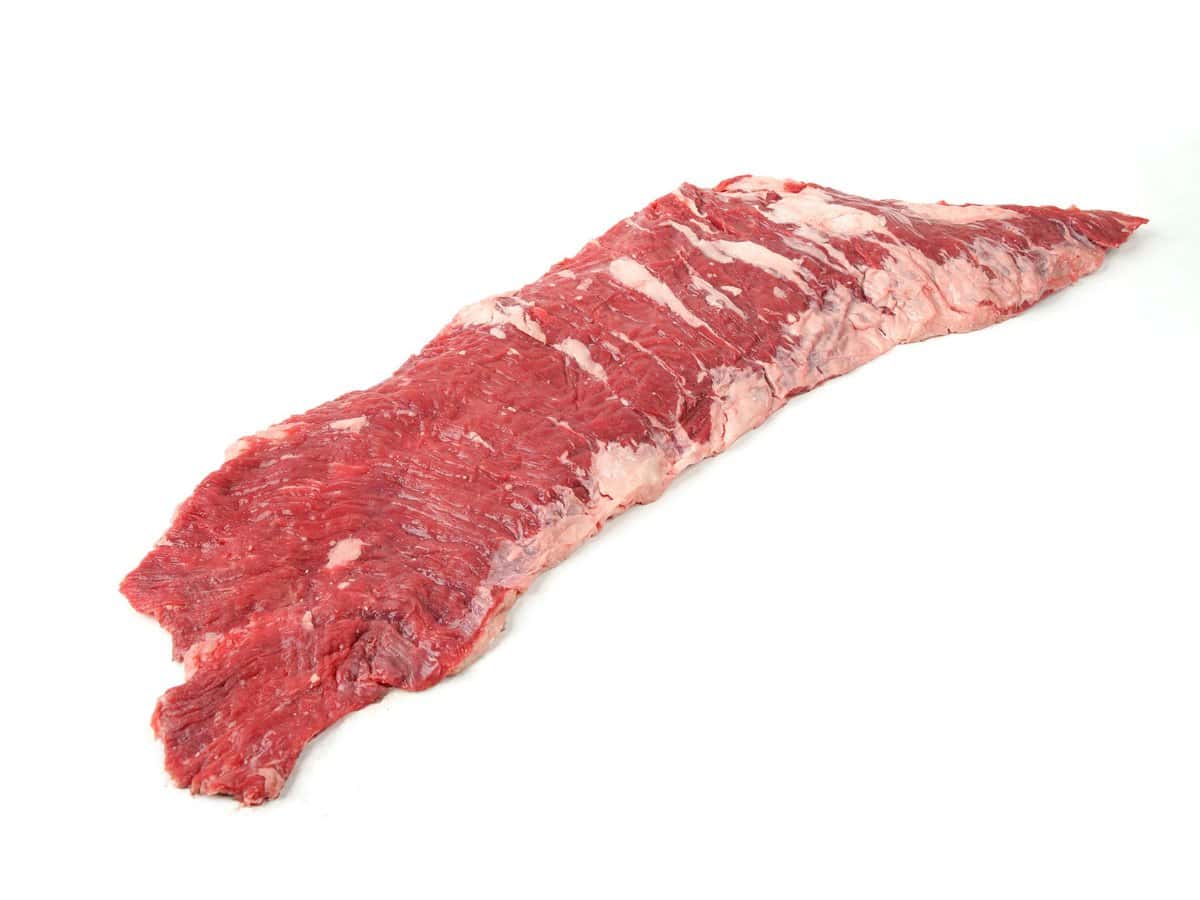
Skirt steak and flank steak have similar uses, but a skirt steak is cut in a longer, ribbon-like strip, tends to be slightly thicker, and has greater marbling than flank steak.
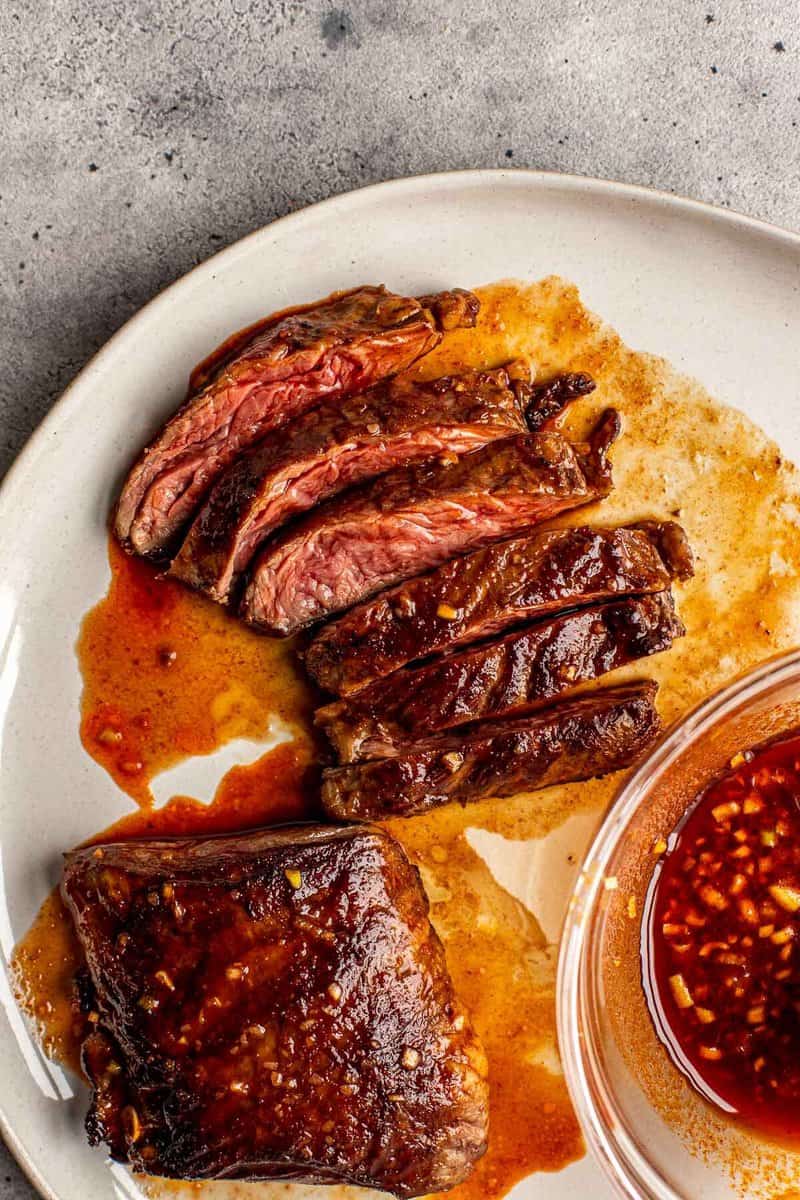
How to Cook Skirt Steak
Skirt steak is a great option to serve as part of a shared dish such as stir fry, or steak and eggs. It’s also an excellent candidate for a sauce or marinade such as adobo sauce or gochujang sauce.
If you’re ready to cook a skirt steak, check out our guide to cooking skirt steak. We offer six different methods of cooking to choose from!
Hanger Steak
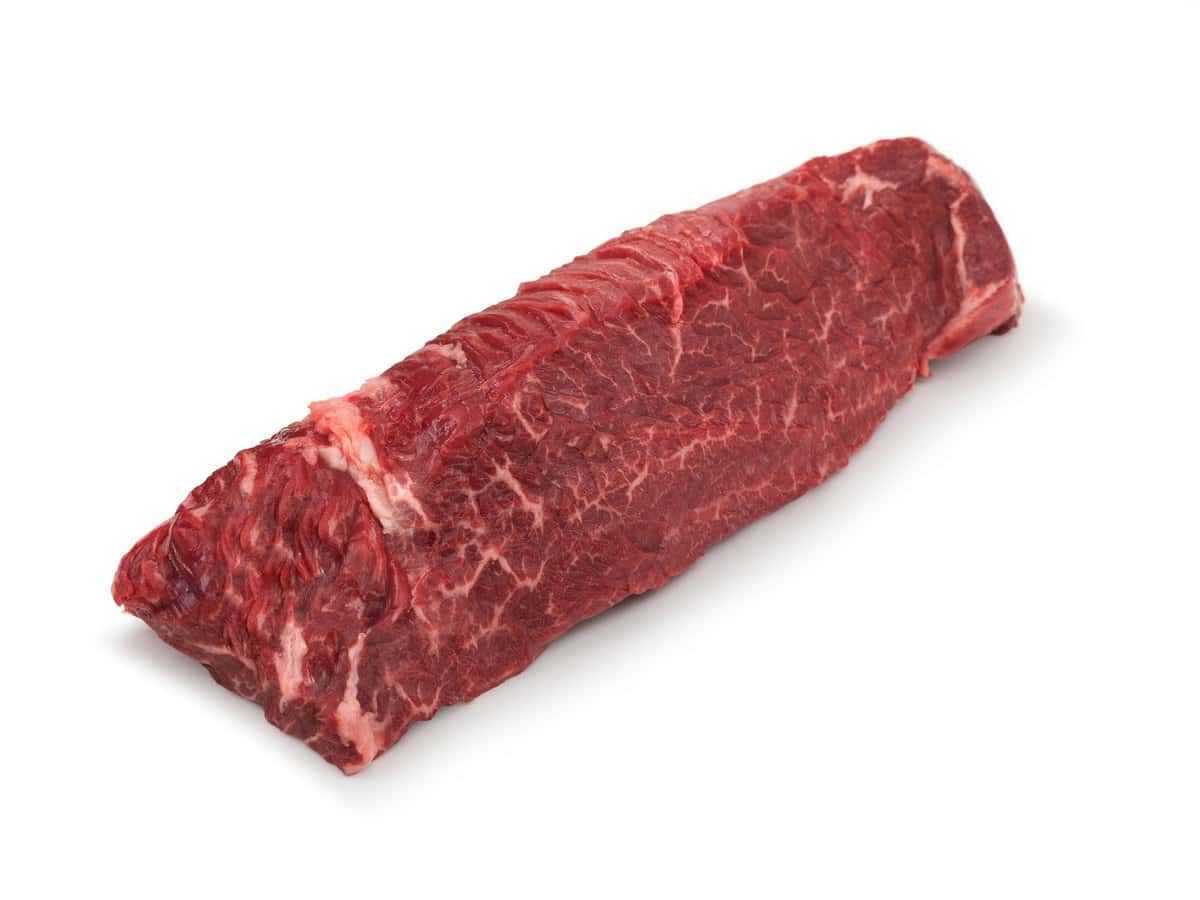
Hanger steak is an affordable cut that comes from the front plate, or belly, of the cow. It hangs off the diaphragm, hence the name ‘hanger’. It’s more tender than other flat steaks such as skirt steak or flank steak.
Hanger steak is sometimes called butcher’s steak and is sold as a larger piece that has a coarser grain running throughout. Hanger steak is best cooked to medium to medium rare to preserve its juiciness.
How to Cook Hanger Steak
Hanger steaks are best when marinated for at least 20 minutes and cooked on high heat to medium rare or medium.
As with other flat steaks, slice against the grain for optimal tenderness.
Tri Tip
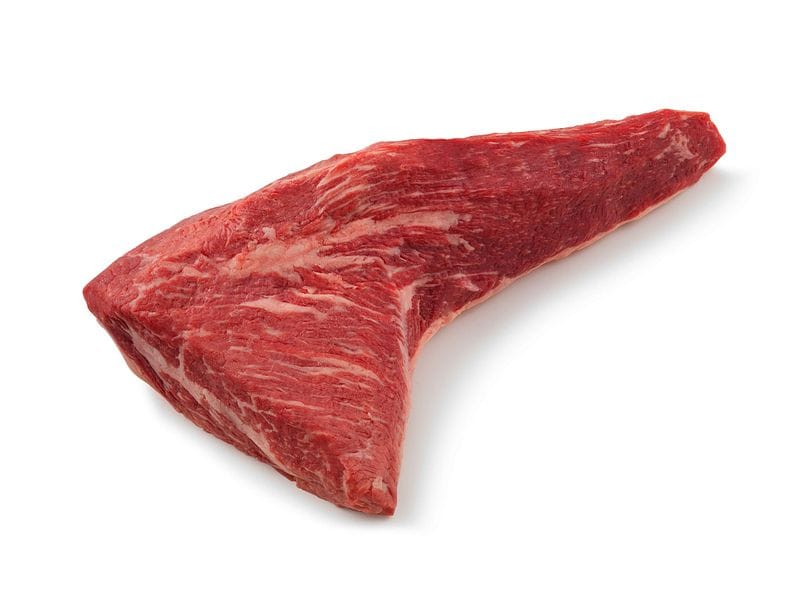
Tri-tip steak is from the bottom sirloin butt. It may also be called a triangle steak, Santa Maria steak, or California cut. Tri-tip cuts were once only used for ground beef but became popular in California as a cut that can stand on its own.
You may notice a triangular shape on a tri-tip roast (hence the tri-tip name), but often the steaks cut from the roast will be more rectangular.
Tri-tip is on the leaner side without significant marbling, so it’s best when sliced thin and served in a sandwich like this Italian Steak Sandwich, or with a creamy side such as mashed potatoes.
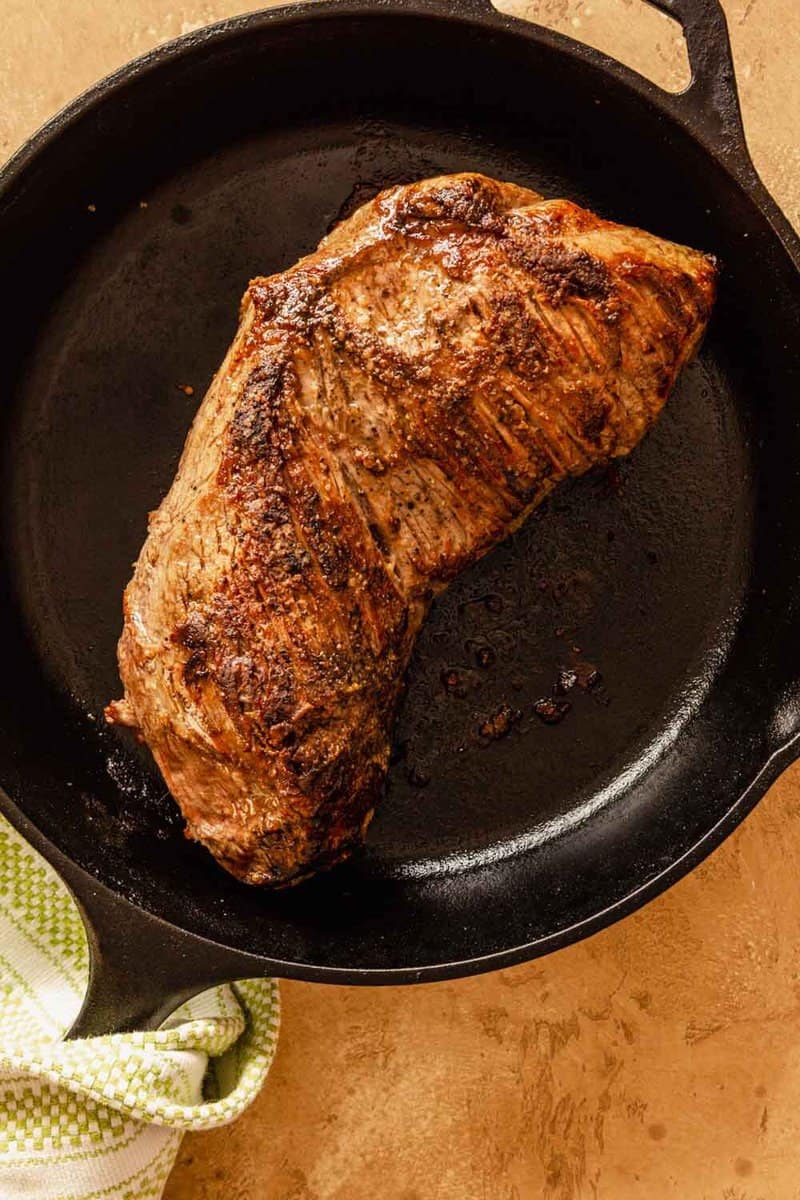
How to Cook Tri Tip Steak
Tri-tip does well on the grill or slow-roasted in the oven. We recommend cooking tri-tip to medium rare to keep it as juicy as possible.
It’s also imperative to cut tri tip against the grain for tenderness.
T-Bone
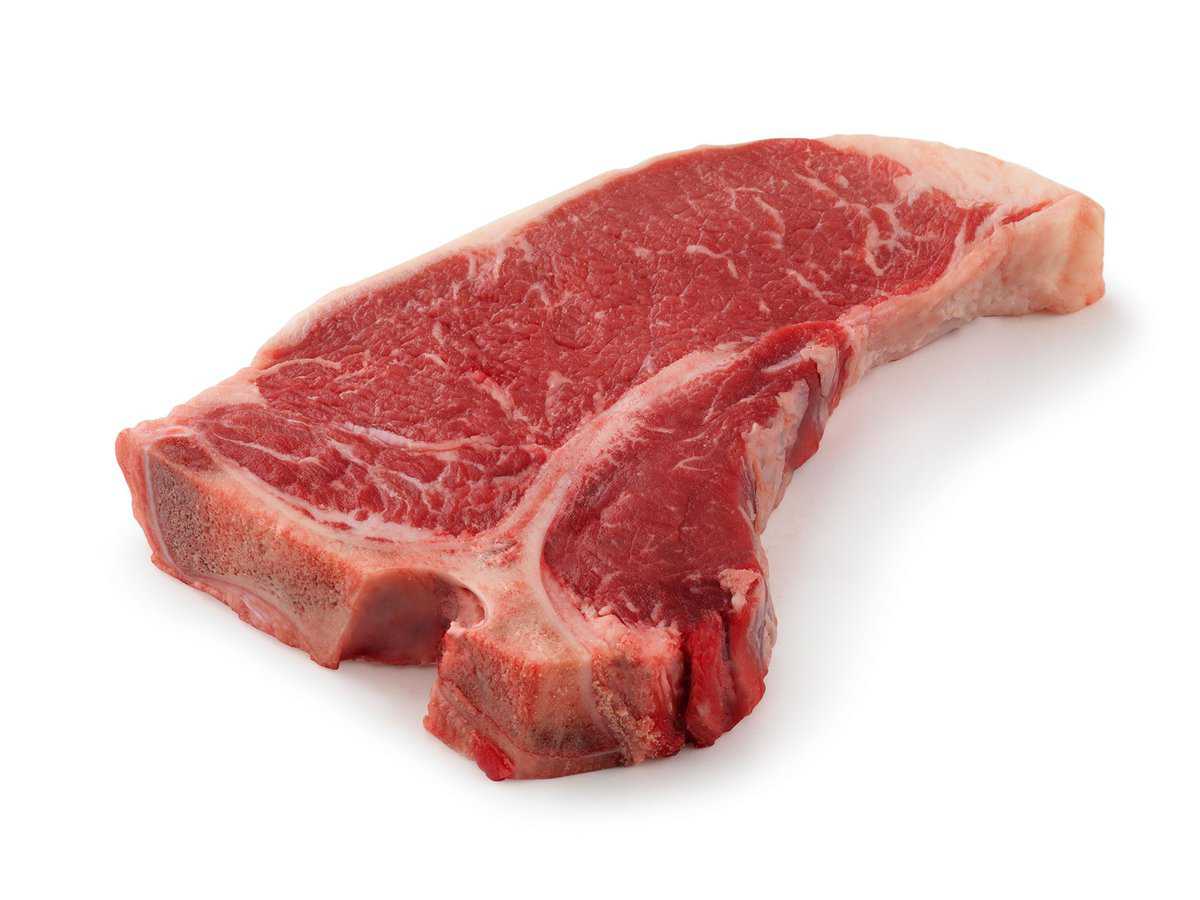
A T-bone steak is a little Flintstone-esque and a favorite of meat lovers. You’ll recognize the characteristic bone shaped like a ‘T’ running down the center of this cut. T-bone steaks are cut from the front of the short loin, just after the tenderloin starts.
Why are T-Bones a perennial favorite? It’s essentially two steaks in one (on either side of the bone). It features both a tenderloin (aka filet mignon) and strip steak. So, a savvy meat-lover gets the best of two worlds.
How to Cook T-Bone Steak
T-bone steaks are best seared on the grill or the stovetop. A marinade usually isn’t necessary, but season both sides with salt before cooking.
Cut the meat off along each side of the bone when you are ready to dig in.
Porterhouse
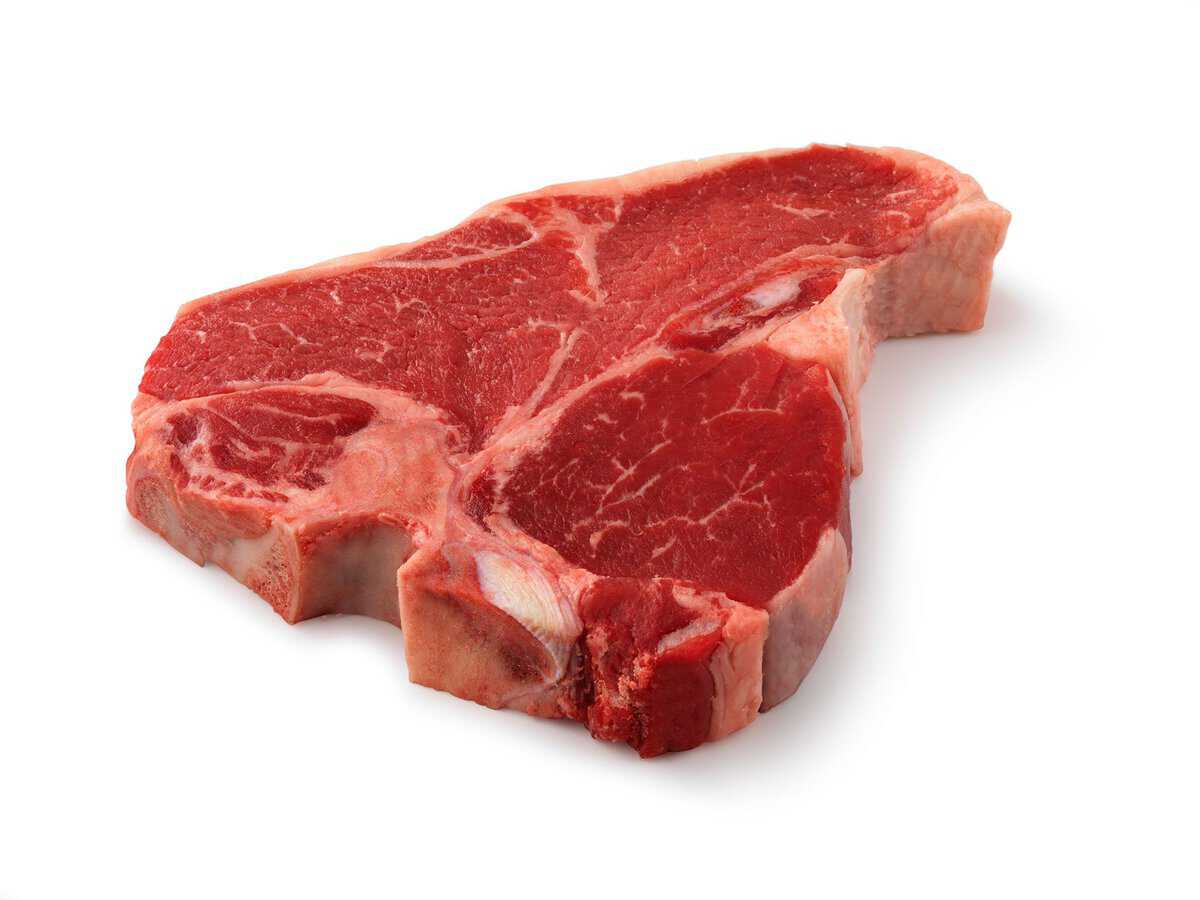
Porterhouse is very similar to a T-bone steak, but a porterhouse is cut further back on the loin. The result is a larger portion of filet mignon and a superb steak experience–you may even need a friend to help polish this one off.
A porterhouse is sold as a bone-in steak with a telling t-shaped bone in the center.
How to Cook Porterhouse Steak
A porterhouse steak is a show-stopper, so it needs little else to dress it up. Season on both sides and cook under the broiler or on the stovetop.
Let the porterhouse shine with simple sides such as some healthy cornbread, a radish salad or a simple garden salad.
This one is so large, you may find yourself with leftovers. But we’ve got you covered with 28 easy leftover steak recipes.
Flat Iron
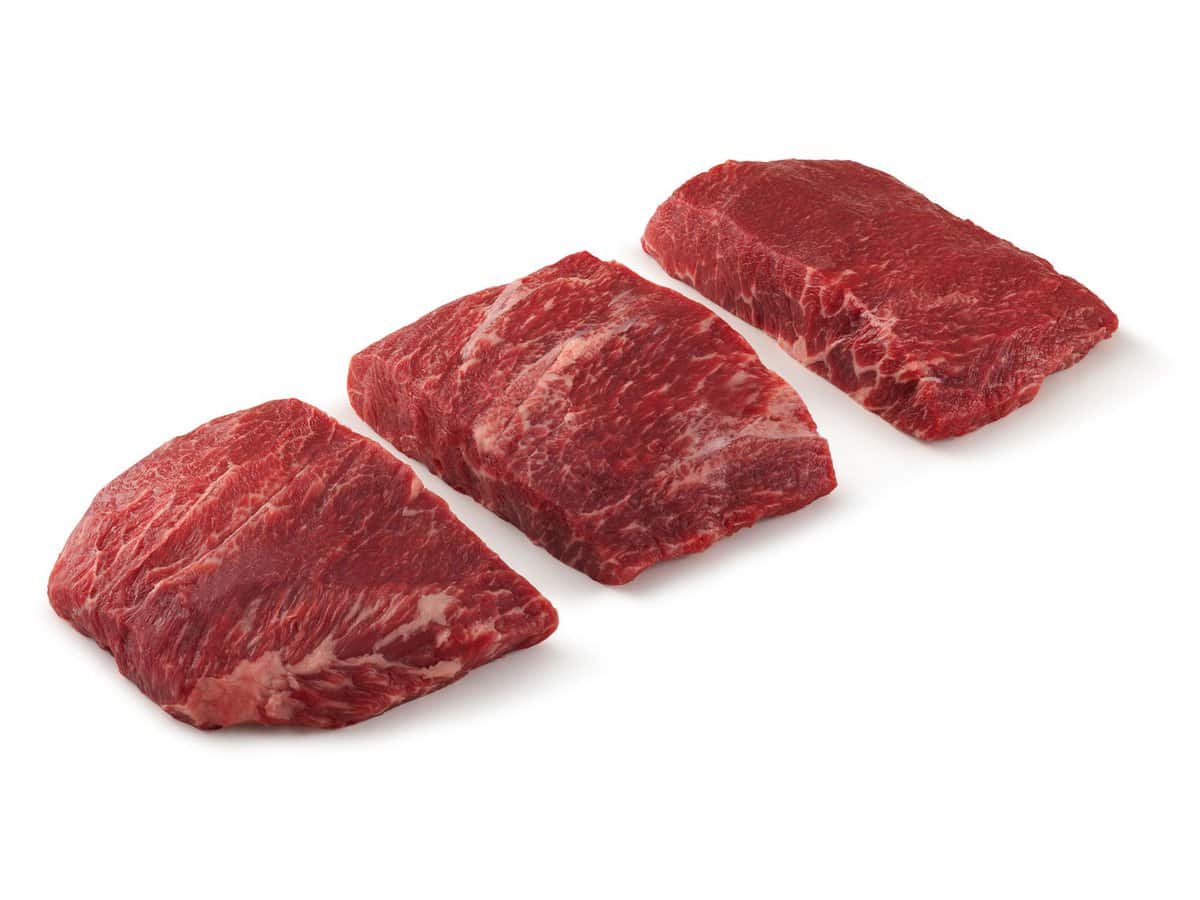
A flat iron steak is a relatively new cut that comes from the top of the shoulder, also called the chuck. Flat iron steaks are typically less expensive and more tender than chuck steaks, which are usually reserved for braising or ground meat.
A flat iron is a larger and flat piece that has good marbling. It’s also sold as butler steak or top chuck steak.
How to Cook Flat Iron Steak
Great on the grill, we recommend cooking flat iron steak to medium rare or medium to ensure it doesn’t get tough.
A flat iron can be very flavorful without a marinade, but they are a good candidate for marinade if you’d like.
Tomahawk Steak
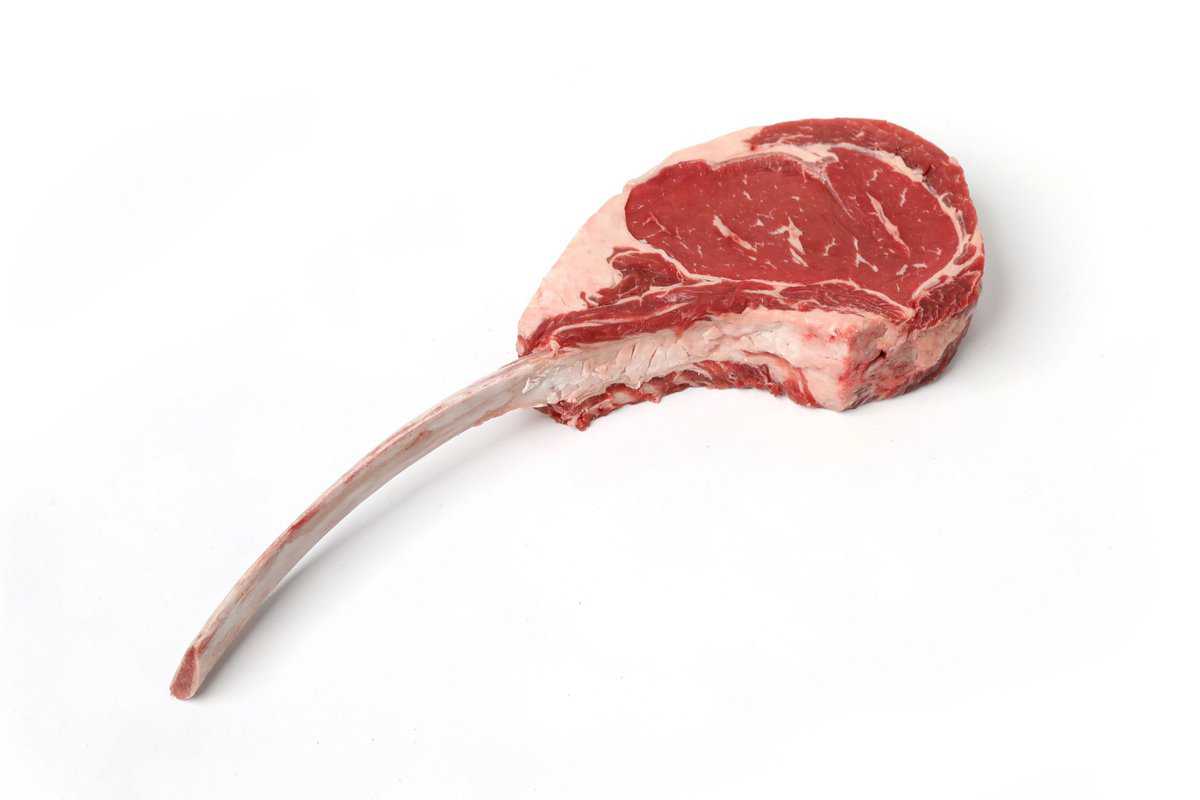
The showiest steak you’ll find, a tomahawk steak is cut from the loin, leaving the rib bone intact. The result is a long, handle-like bone at the end—it’s a steak that certainly wows on presentation.
Even more, a tomahawk steak is a huge portion (30–40 ounces!), thick, and super juicy. This steak that will have your mouth watering!
It’s similar to a ribeye steak in marbling and tenderness. It can be hard to find, but this beast of steak is a great specialty cut for special occasions and best shared with friends.
How to cook Tomahawk Steak
The reverse sear cooking method is the best option for a tomahawk steak due to its size.
FAQ
You may see options such as select (lower grade), choice, or prime beef (highest grade) when you’re looking to buy steak. Grading of beef is voluntary but can help determine quality and premium taste.
It all depends on your budget as the cost generally increases from select to prime beef.
Depending on the level of doneness you prefer on your steak, use our cooking temperature table below as a guide:
Rare: 115–120ºF (46–49ºC)
120–125ºF (49–52ºC) after resting
Medium-rare: 120–125ºF (49–52ºC)
125–130ºF (52–54ºC) after resting
Medium: 130–135ºF (54–57ºC)
135–140ºF (57–60ºC) after resting
Medium-well: 140–145ºF (60–63ºC) (recommended USDA temperature)
145–150ºF (63–65ºC) after resting
Well-done: 150–155ºF (65–68ºC)
155–160ºF (68–71ºC) after resting
Zestful Kitchen has created this temperature table using America’s Test Kitchen and Serious Eats as sources.
Wagyu beef, also called Kobe beef, is a Japanese breed of cattle known for intense marbling and a highly tender texture. You can think of it as a grade of beef. It also comes with a hefty price tag, so it is a matter of personal cost and benefit. The same cuts of steak are available for Wagyu as for other cattle.
More Beef Recipes to Try
We’ve got loads of beef recipes for you to browse! From burgers and kebabs, to soups, sandwiches and more!
Nothing hits like a smash burger does. It’s the ultimate decadence. If you’re looking for something a bit smaller, try our Smash Burger Sliders.
For an elegant appetizer that will “wow,” make Mini Beef Wellington Bites.
No soup season is complete without a beef stew or two! Try our Beef and Barley Soup or Beef and Cabbage Soup—both are savory, cozy and easy to make.
Up your ground beef game with these deliciously spiced Beef Kofta. Served on a platter with cucumbers, herbs, cabbage, and naan—this recipe feeds a hungry crowd.
Another must-try ground beef recipe is our Korean Meatballs. The drizzle sauce they’re served with is out of this world!
Appetizers
Mini Beef Wellington Bites
Soups, Stews & Chilis
Beef and Barley Soup
Middle Eastern-Inspired
Beef Kofta Kebab with Herbs and Naan
This article is written and created in partnership with the Iowa Beef Council. As always the thoughts, opinions, recipe, photos and content are all my own.
Raw steak cut images courtesy of beefitswhatsfordinner.com
